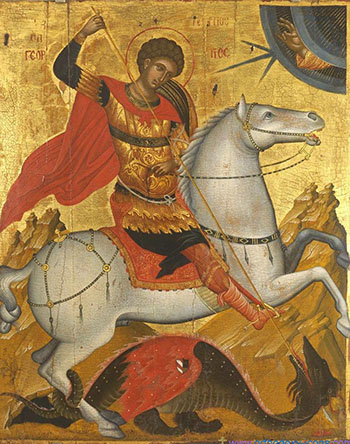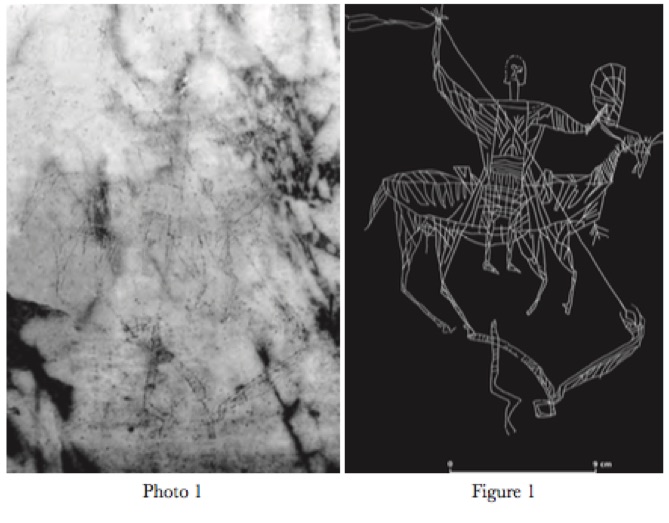

A Dragon Slayer Graffito Drawing in Hagia Sophia
Thomas THOMOV (Sofia)
This paper deals with a rare example of a graffito drawing from the church of Hagia Sophia with a complete Christian scene of a warrior on horseback in western attire, who thrusts his long spear into the gaping jaws of a beast under the horse’s hooves. The drawing represents St George and, taking into account the types of armor depicted, the creation of the graffito may be dated to the 1430s–1470s
The Great Church or the church of the Holy Wisdom is a famous sixth-century domed church, which was built by emperor Justinian the Great. It contains an interesting collection of graffiti inscriptions and drawings, some crude and schematic, others remarkably detailed. Thematically, they may be divided into memoranda, inscribed mainly on the occasion of attendance at the church, various inscriptions of an invocative nature, the beginning of the alphabet, human, magical and animal figures, ships, coats-of-arms 2, weapons, crosses, game board, 3 monograms and mason’s marks.
The autographic, supplicatory inscriptions containing the formula ‘Lord, help Your servant X’ and those with the formula ‘X wrote’ occur frequently. The graffiti are written in Greek, Cyrillic, Armenian and Latin script letters. Eighty-five Cyrillic and one Glagolitic inscription which have been scratched in almost all parts of the galleries of Hagia Sophia have been recently published.
A total of 90 graffiti drawings were recorded as a result of my fieldwork in Istanbul between 2005 and 2014. They include many different shapes – from sailing ships, animals, birds, weapons, coats-of-arms and abstract geometrical patterns, to portraits or full scale figures of saints, angels, clerics and laymen. Among them, the most numerous are the ship graffiti (35).
Many of the drawings are highly detailed and accurate, indicating that they have been sketched by skilled visitors
In conclusion, it seems reasonable to suppose that the horseman in the graffito can be identified with St George representing a rare example of an ex-voto drawing requesting the protection of the saint. Its completion may be placed between the 1430s and 1470s.

Thomas Thomov
1309 Sofia, Bulgaria
compl Ghevgelijsky
8 Sava Mikhailov Str., Entr. D
pyperko@yahoo.com




 click here for icons of christ
click here for icons of christ click here for icons of the theotokos
click here for icons of the theotokos click here for icons of angels
click here for icons of angels click here for icons of saints
click here for icons of saints








